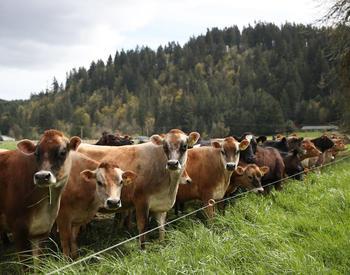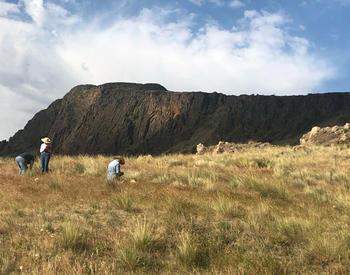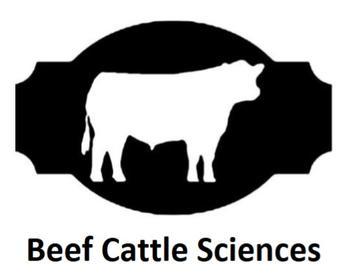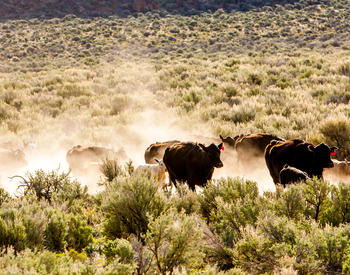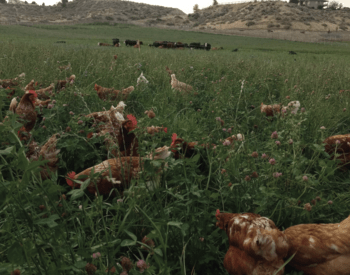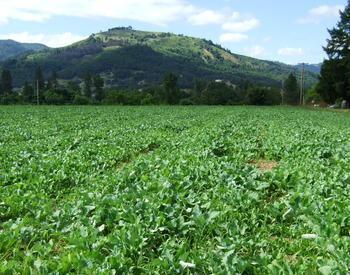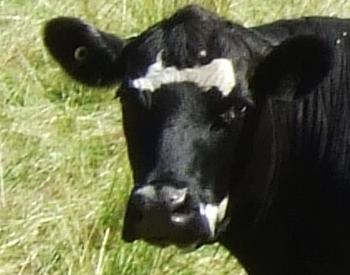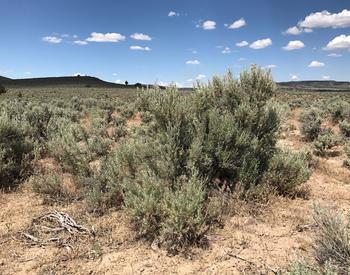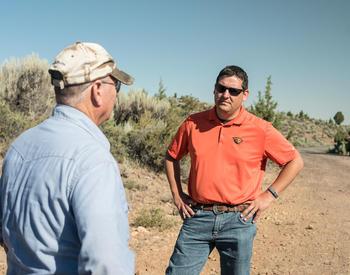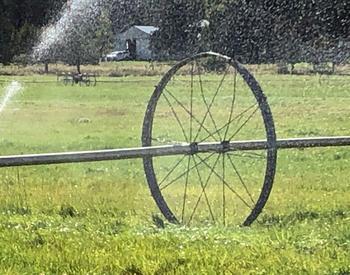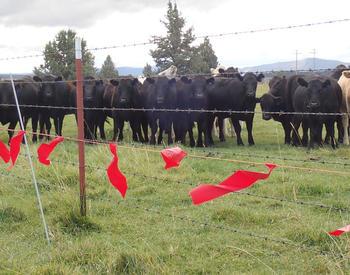Mineral nutrition is critically important to efficiently producing healthy, productive animals. Yet when it comes to feeding our livestock it is often overlooked, done incorrectly, or in need of improvement.
The objectives of this article are to help you perform an initial mineral assessment on diets you are feeding to your livestock and compare that to animal requirements. With this information you can start to determine whether any changes need to be made in order to provide the proper levels of minerals in your animals’ rations. Once you determine you need to make changes for improvement, please seek additional help.
The items below are only initial steps to improving your animal mineral nutrition. They are designed to take a first look at your program.
The assessment starts off with basic exercises you can do that point out areas for potential improvement. Some of the problems you might find are quite easy to fix. Continue into the assessment to get a more in-depth look at your mineral program. The subject gets more complex, with mineral interactions and different types of minerals (sources and amounts) to deal with, but those are advanced topics you may need more assistance with from your mineral supplier, nutritionist or veterinarian.
The idea here is to draw your attention to areas that need improvement. Beware of problems you may cause with trying to make your own fixes without proper understanding of the subject. Please ask for assistance, I will be glad to help. Let’s get started with the mineral assessment.
Step 1 — Study information on mineral quantities:
- Mineral requirements and tolerances of livestock — See the National Academy Press website and search for "nutrient requirements.” Find your livestock type and look for a minerals table. Or find mineral requirements of beef, sheep and goats on the OSU Extension website. You can also request those be mailed to you.
- Minerals in the main feeds — Read the label from bagged feeds and test your hay and pasture. It is best to know exactly what is in your own forage, but you can use local values from hay surveys. See Oregon Forage Library ( Table 1b) on the OSU Extension website. Douglas County Mineral Survey data are on the last page of that document.
- Collect labels from the mineral supplements you are currently offering to your animals.
Step 2 — Evaluate your mineral supplements:
- Check to see what minerals are lacking in the base feeds (compare mineral concentrations in feeds to mineral requirements). Check to see if your mineral mix contains those. For example, forages grown in some areas are low in copper (Cu), so the mineral mix should contain Cu if you are feeding cattle and goats. Sheep are sensitive to Cu so many mineral mixes omit it.
- Check to see if your livestock are consuming the proper amount of mineral mix. Start keeping track of how much they are eating. Feeding a small amount of loose mineral mix in a weatherproof feeder each week will make it easier to measure mineral consumption compared with larger amounts or using mineral blocks. Don’t run out of mineral before you get a chance to see how much the animals will eat free choice. Feed enough so a small amount is left each week. Usually, the animals will eat 0.5 to 3 ounces per head per day. Watch for “salt hogs” (animals that eat more than their share) and for wildlife. These could decrease the accuracy of your measurement. Sometimes animals change the amount of mineral they consume. This may happen at different times of the year or when their diets are changed. Make sure that you keep an eye on their consumption to ensure they are getting what they need.
- Use the following formulas to calculate the ounces of mineral mix your animals actually consume each day:
- lb per day = lb of supplement fed / number of days to consume the supplement
- lb per head per day = lb per day / number of animals
- oz per head per day = (16 oz per lb) X (number of lb consumed)
- For example, if a 50-pound bag of trace mineral salt is consumed by your 20 head of cows in 3 weeks, the number of ounces per head per day can be calculated as follows:
- 50 lb /21 days = 2.38 lb per day
- 2.38 lb per day / 20 cows = 0 .119 lb per head per day
- 0.119 lb x 16 oz per lb = 1.9 oz per head per day
- For example, if a 50-pound bag of trace mineral salt is consumed by your 20 head of cows in 3 weeks, the number of ounces per head per day can be calculated as follows:
- Check the tag on the bag for the specific amount of that particular mineral mix your animals should eat. It should say something like “animals should consume 2.0 oz per head per day.” Are your animals eating the amount listed on the directions? See step 4 below for tips on this.
Step 3 — Calculate the amount of individual minerals in the ration
Here is an example for daily copper (Cu) intake by a cow consuming average quality hay and a commonly sold mineral mix. Note: Note: ppm = parts per million; 1% = 10,000 ppm; 1 ppm = 1 mg/kg; 1 ppm = 0.0001%).
- Copper from mineral supplement
- oz of mineral mix consumed per day (measured) = 2.0 oz
- ppm of Cu in mineral mix (from bag label) = 500 ppm
- % of Cu in mineral mix (line 2 / 10,000) = 0.05%
- oz of copper from mineral mix (line 1 x line 3 / 100) = 0.001 oz
- mg of Cu from mineral mix (line 4 x 28,350 mg per oz) = 28.4 mg
- Copper from hay
- lb of hay consumed (1000 lb cow) = 20 lb
- oz of hay consumed (line 6 x 16 oz per lb) = 320 oz
- ppm of Cu in hay (example hay test) = 5.6 ppm
- % of Cu in hay (line 8 / 10,000) = 0.0006%
- oz of Cu from hay (line 7 x line 9 / 100) = .0018 oz
- mg of Cu from hay (line 10 x 28,350 mg per oz) = 50.8 mg
- Total amount and concentration of copper in the diet
- mg of Cu in the diet = line 5 + line 11 = 79.2 mg
- oz of Cu in the diet = line 12 / 28,350 mg per oz = 0.0028 oz
- Total oz of feed = line 1 + line 7 = 322 oz
- % Cu in diet = line 13 / line 14 x 100 = 0.0009%
- ppm Cu in diet = line 15 x 10,000 = 8.7 ppm
Step 4 — Compare minerals in diet to animal requirements
For beef animals, the requirement for copper is 10 ppm. From the above calculations, do dietary levels (hay plus mineral mix) meet requirements? The answer is no; the cows are only getting 8.7 ppm (slight deficiency).
If your animal’s ration is deficient in Cu or other essential minerals, check with your mineral mix provider. They may be able to reformulate to include higher concentrations of particular minerals, or may add flavor enhancers, such as dry molasses, to increase intake. If the animals are eating too much, the amount of salt (NaCl) can be increased. Make sure any changes are done through an experienced nutritionist. Sometimes more problems are created through improper change in mineral formulation than were originally present. Be aware, Cu can be toxic to cattle if present in excess. Also, sheep are very susceptible to Cu toxicity.
You can work through other minerals on your own. The exercise above was for you to see what a mineral assessment entails, and to get you thinking about your mineral program. But, this is all much easily done on a computer. Kansas State University has an online mineral calculator. Try using the above example parameters and see if you can get the same answer on the computer as found in this article.
Other important considerations
Even though the diet may contain enough Cu, there may be other factors that influence blood Cu levels in cattle. High sulfur, molybdenum, iron and zinc can interfere with Cu absorption and/or utilization. It is suggested that not only ration analysis be done, but also a blood, hair, and or tissue workup and assessment be done through your veterinarian.
Signs of Cu deficiency include anemia, reduced growth, de-pigmentation and changes in growth and physical appearance of hair, cardiac failure, bones that are fragile and easily fractured, diarrhea, and low reproduction characterized by delayed or depressed estrus.
Call me and get started on your cattle’s nutritional assessment soon.

